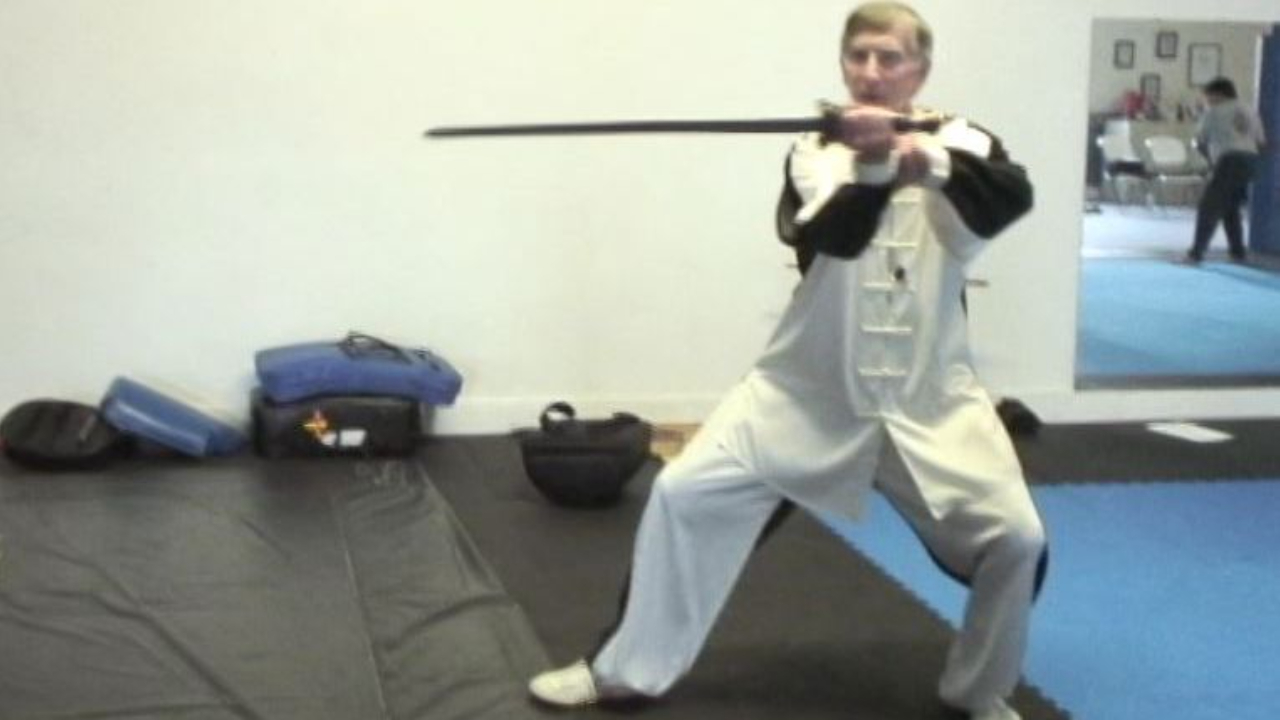Training the Chen Taiji Straight Sword Form with Master Chen Huixian

I spent the weekend studying with Master Chen Huixian in Madison, Wisconsin. We worked through the entire Chen Straight Sword form in six hours of training on Saturday and six hours on Sunday. The workshop was sponsored by her student, Patrick Rogne, the owner and instructor at Ancient Root Taijiquan in Madison.
I have been practicing this form for 13 years, and I originally learned a different version, but except for a couple of major differences in the opening movements, most of the movements follow the same order. There are different angles and different flourishes and transitions, but essentially it is the same form.
Chen Huixian's form is similar to the form of her uncle and primary teacher, Grandmaster Chen Zhenglei. She is an "in-chamber" disciple.
Over two days, she demonstrated each movement a few times, then led the students through the movement, carefully explaining which leg is solid, where the weight is shifting, when you should sink, how to hold the sword, how to do th...
Chen Village Girls Practicing Chen Taiji Straight Sword Form

One of my former Taiji teachers, Mark Wasson, visited the Chen Village many times to train with members of the Chen family.
On one visit, he took some great video of the village, the Chen family, and their students.
This short video shows young girls practicing the Chen Taiji Straight Sword form as Chen Xiaoxing watches.
Mark passed away a year or so ago. He took several Americans to Chen Village, introducing them to the Chen family. I have not been to the Chen Village, but through Mark, I met and trained with Chen Xiaoxing when he visited the United States. In 2006, I sponsored Chen Xiaoxing's visa so he could come to the US for a series of workshops.
A Fun Workshop on the Chen Taiji Straight Sword Form

Last Saturday in Moline, Illinois, I conducted a four-hour workshop on the Chen Tai Chi Straight Sword Form. The form has 49 movements, so it was a challenge to teach each movement and include quality information about body mechanics and the applications for the movements. But with a hard-working group, we did it.
The sword form is a great Taiji form -- smooth and powerful, it can be done slowly or fast with fa-jing. Always, the internal body mechanics should be present:
- Establishing and maintaining the ground path
- Maintaining peng at all times
- Using whole-body movement
- Silk-Reeling energy
- Opening/closing the kua properly
- Dan T'ien rotation
I've heard instructors in the past talk about "extending your chi to the end of the sword." And for those who have their heads in fantasy, that confuses things.
The "intent" of each movement in a Tai Chi form is its fighting application and how you are using the body mechanics against an opponent. By utilizing the body mechanics l...
